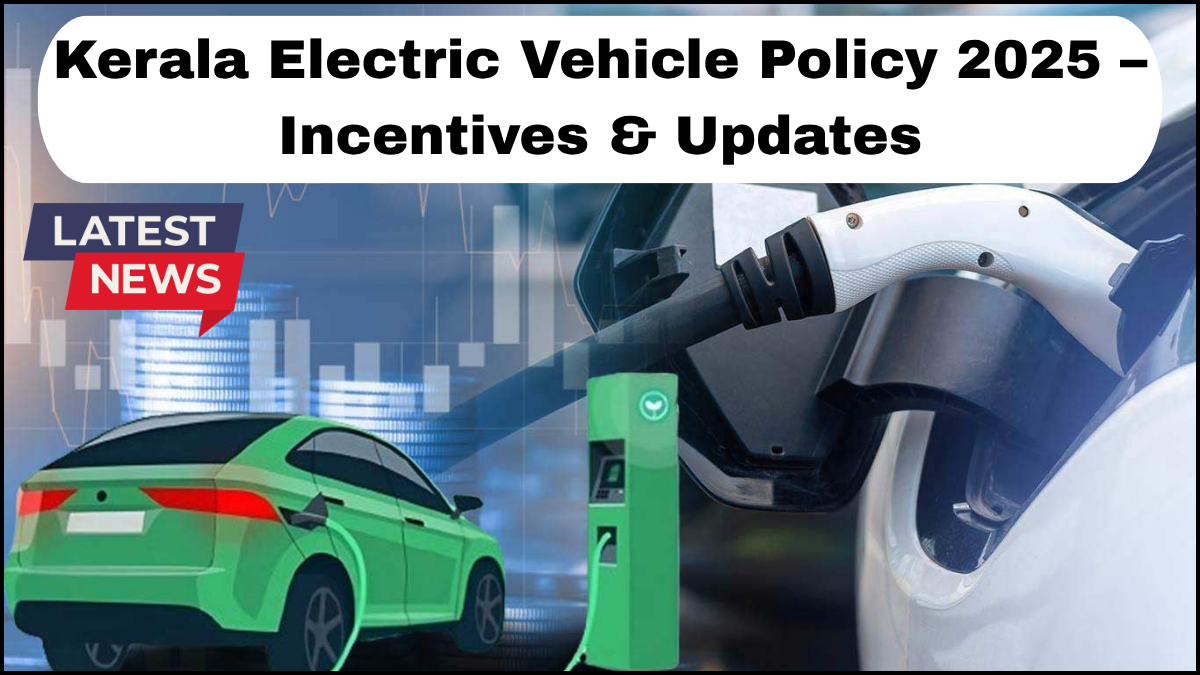Kerala is accelerating its transition to clean mobility with the rollout of the Kerala EV Policy 2025. With a clear focus on sustainability, the state government is pushing for rapid adoption of electric vehicles (EVs) through a mix of financial incentives, infrastructure development, and regulatory support. The policy aims to reduce carbon emissions, enhance public transportation, and stimulate the EV manufacturing ecosystem within the state.

Here’s a detailed look at the latest updates, key incentives, and what this means for individual buyers, fleet operators, and manufacturers.
Objectives of the Kerala EV Policy 2025
The Kerala EV Policy 2025 is designed with several ambitious yet achievable goals:
-
Achieve 1 million EVs on the road by 2025.
-
Convert public transport fleets, especially buses and autorickshaws, to electric.
-
Establish 2,000 EV charging stations across the state.
-
Promote local manufacturing of EV components and batteries.
-
Reduce vehicular emissions by 25% by 2025.
These goals position Kerala as a forward-thinking state, aligning with India’s national mission for electric mobility.
Key Incentives Under the Kerala EV Policy 2025
Kerala is offering a range of direct and indirect incentives to boost EV adoption. Here’s a breakdown of the major benefits:
1. Electric Vehicle Subsidy for Buyers
Buyers of electric vehicles in Kerala are eligible for substantial electric vehicle subsidy benefits:
-
Two-Wheelers: Up to ₹10,000 subsidy or 10% of the vehicle cost.
-
Three-Wheelers: Subsidy up to ₹30,000, especially for autos and delivery vehicles.
-
Four-Wheelers (Personal Use): ₹25,000–₹50,000 incentive, based on vehicle price and battery capacity.
-
Fleet and Commercial Vehicles: Additional subsidy for taxis, ride-sharing platforms, and delivery companies.
Subsidies are often combined with GST reductions and registration fee waivers, significantly lowering the upfront cost of EV ownership.
2. Road Tax & Registration Fee Waiver
New electric vehicle registrations in Kerala are exempt from road tax and registration fees for the first five years. This applies to both private and commercial EVs and can lead to savings of several thousand rupees.
3. Scrappage Incentives
To encourage the replacement of older, polluting vehicles, the state is offering scrappage incentives. Owners scrapping ICE (internal combustion engine) vehicles more than 15 years old can get bonus subsidies when switching to electric.
4. Charging Infrastructure Support
The state is prioritizing the development of a dense and reliable charging network:
-
Public charging stations will be established at petrol pumps, malls, highway rest stops, and parking lots.
-
Government buildings and urban local bodies will be required to install EV chargers.
-
Private players investing in charging infrastructure are eligible for capital subsidies and land lease benefits.
5. Incentives for Manufacturers & Startups
To build a robust EV ecosystem, the policy supports local entrepreneurs, OEMs, and component manufacturers through:
-
Land at subsidized rates in EV industrial parks.
-
Capital subsidies for battery manufacturing units.
-
R&D grants for startups in battery tech, BMS, and charging solutions.
-
Skill development programs for technicians and engineers.
EV-Friendly Urban Planning
Kerala’s urban planning agencies will integrate EV considerations into development plans:
-
Mandating EV-ready parking spaces in new residential and commercial buildings.
-
Retrofitting existing bus depots and auto stands with charging points.
-
Supporting micro-mobility (e-scooters and e-bikes) for last-mile transport.
Implementation & Monitoring
The Kerala State Electric Vehicle Mission (KSEVM) is the nodal agency overseeing implementation. It coordinates with the Transport Department, electricity boards, municipalities, and private stakeholders to track progress and resolve bottlenecks.
Real-time dashboards will monitor registrations, subsidies disbursed, and charging station usage to ensure transparency.
Challenges and Outlook
Despite the promising incentives, EV adoption in Kerala faces hurdles such as:
-
Range anxiety due to limited fast-charging infrastructure.
-
High initial investment for commercial fleets despite subsidies.
-
Limited awareness in rural areas.
However, the policy’s targeted efforts, including EV awareness campaigns and public-private partnerships, are geared to overcome these obstacles.
By 2025, Kerala aims to emerge as a model state for electric mobility, with a well-oiled ecosystem spanning vehicles, energy, infrastructure, and workforce.
Frequently Asked Questions (FAQs)
1. Who is eligible for the electric vehicle subsidy under Kerala EV Policy 2025?
Any individual or company purchasing an EV in Kerala is eligible, provided the vehicle is registered in the state and falls under the approved models.
2. What kind of EVs get incentives under the policy?
Two-wheelers, three-wheelers, four-wheelers, electric buses, and commercial electric vehicles are all eligible for different levels of support.
3. Are charging stations included in the policy benefits?
Yes, both public and private players are eligible for financial incentives to set up charging infrastructure, including fast-charging stations.
4. Does the policy provide benefits to EV manufacturers in Kerala?
Absolutely. The policy promotes local manufacturing through land subsidies, capital support, and R&D grants, especially for battery and component manufacturers.
5. Is there a deadline for availing subsidies?
Yes, the subsidies are time-bound and budget-limited, available until the EV targets for 2025 are met or the allocated budget is exhausted.
click here to learn more
